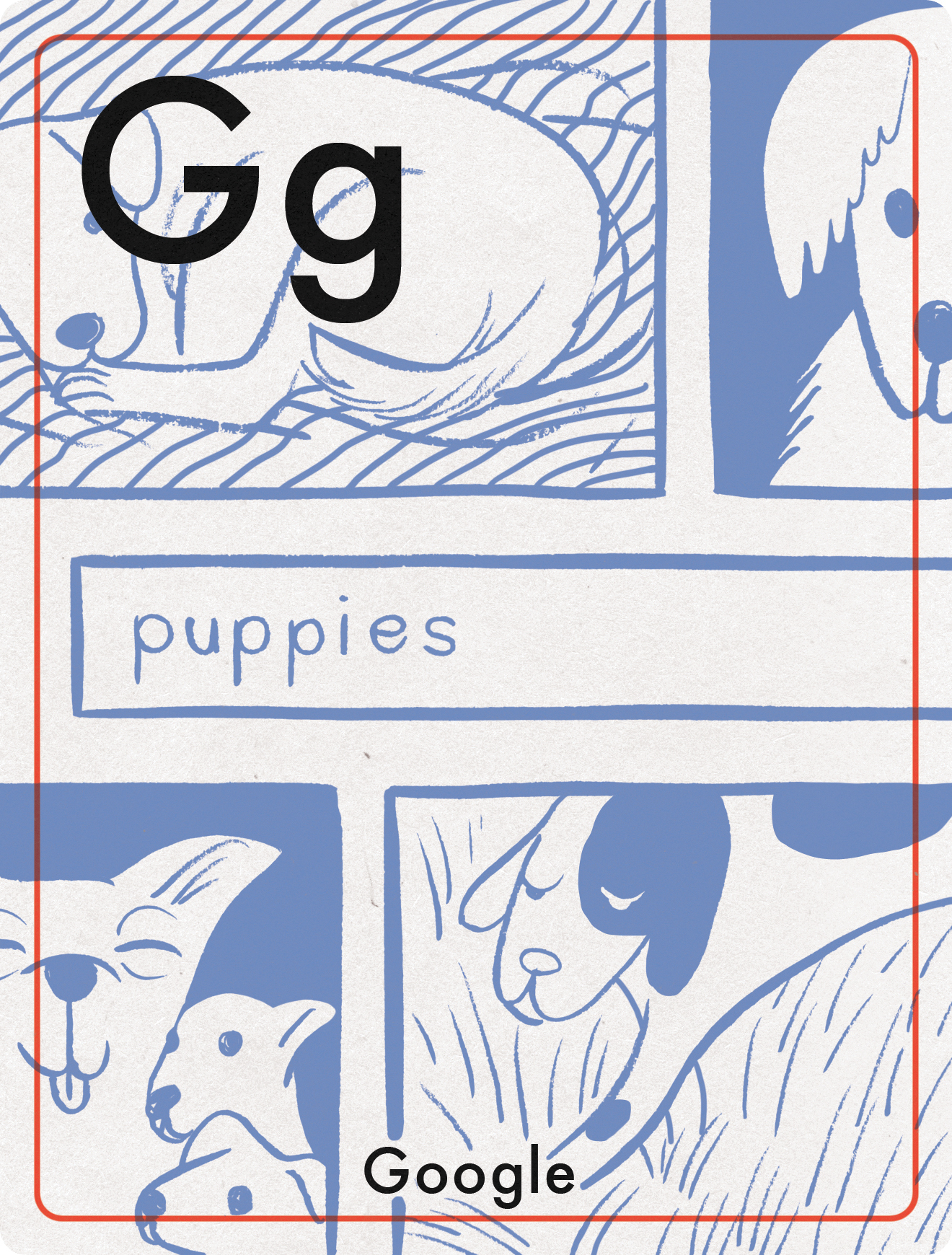What Will Alphabet Be When It Grows Up?

One of the more interesting documents of the information age was posted on the Internet 11 years ago, as part of the initial public offering of Google. That document, signed by founders Larry Page and Sergey Brin, conveyed both a deep enthusiasm for technological innovation and a mistrust of Wall Street. Page and Brin suggested that it would be possible to balance risk-taking with a sense of fiduciary responsibility. They would implement “a corporate structure that is designed to protect Google’s ability to innovate.” Above all, Google would not be a company that existed merely to reap profits and expand market share—rather, it would aspire “to develop services that significantly improve the lives of as many people as possible.” Page warned: “As an investor, you are placing a potentially risky long term bet on the team, especially Sergey and me.”
By almost any measure—profits, growth, branding, products, employees—things have turned out well, though it’s debatable whether AdWords, the product behind much of Google’s immense wealth, has improved lives all that much. But, in any case, Google is no more. Or at least, the name Google lives, but as a part of the holding company known as Alphabet, which was announced by Page after the U.S. financial markets closed on August 10. In the reorganization, the profitable parts of the Google empire—its business in Web search and advertising, along with YouTube and Google Maps—will stay in an area of the company that stock analysts tagged as “core Google.” The rest of Page and Brin’s now-sprawling conglomerate, including its R&D lab known as Google X, its inchoate forays into life sciences and life extension, and Nest Labs, its household products division—in other words, all the parts of the vast empire that don’t make money—will be given a large degree of autonomy.

You could interpret the reorganization in purely financial terms—as a practical move meant to give Wall Street greater clarity about the profits of core Google and the investments being sunk into more speculative ventures such as X, which has developed a self-driving car and high-altitude balloons that deliver Internet access. Page acknowledged the validity of this view in his announcement of Alphabet, noting that the shake-up would make his company “cleaner and more accountable.” Beyond the financial outlook, though, a more interesting question arises: will Alphabet be able to demonstrate a productive new path for industrial innovation?

The story of Bell Labs, founded in 1925 as the R&D lab of AT&T during the era (1913–1984) in which AT&T enjoyed a monopoly on U.S. telephone service, can help answer that question—and point to the challenges Alphabet will face. Bell Labs created many of the foundational technologies of the information age, including the transistor, many early lasers, communication satellites, and the UNIX operating system. It represents our best example of what an innovative, technology-focused industrial organization can accomplish. It was not only the country’s most elite industrial lab; it was, for many decades, among the world’s most elite institutions for research in mathematics, physics, and materials science. It was also where the formalized study of acoustics, semiconductors, and cellular communications first flourished.
Things Reviewed
Google’s 2004 Founders’ IPO Letter
Announcement of Alphabet
August 10, 2015

There are a fair number of Bell Labs admirers and former staffers working within Google. And almost certainly, Google’s willingness to push boundaries and fund projects for an unusually long time gives us the closest analogue to a Bell Labs of the modern era. After all, Google too is more or less a monopoly, and it is funding its research largesse out of the rather mundane business of AdWords, just as AT&T funded some of the world’s most impressive physics research by selling telephone service.
Still, it’s important to keep in mind that while much of Bell Labs’ reputation rests upon the breakthroughs of its research department, its less glamorous but far larger development department did much of the organization’s heroic work. John Pierce, one of Bell Labs’ research managers, once said the organization’s structure reflected the fact that “pursuing an idea takes, I presume, 14 times as much effort as having it.” It was a keen insight born of Pierce’s decades of experience. Creating a functional product from breakthrough science—the transistor, for instance—required not only extraordinary effort but also an extraordinary amount of time.


Another distinction is crucial. Bell Labs organized its R&D efforts around communications-related pursuits—the only way to justify work funded by its parent company, AT&T. This was a broad enough directive to allow all sorts of peripheral work in physical chemistry and even astronomy. There was room for flexibility, especially in the math department: before he came to MIT, Claude Shannon, whose theories on information paved the way for efficient digital communications, sometimes spent entire days tinkering with computerized chess programs and automated gadgets. Yet the policy was strict enough to lead to the departure of one of the most brilliant physicists of the 20th century, John Bardeen, a coinventor of the transistor, who fled Bell Labs partly because of frustration after his work on superconductivity was deemed tangential to communications research. It’s doubtful something like this would happen at Google (or at Alphabet). In fact, over the years, Google hasconsistently and intentionally funded expensive R&D work that is unrelated to its core business, which may be the single most astonishing aspect of Page and Brin’s management regime.
One of the lessons of 20th-century industrial research is that the engineering, business, and even sales sides of a company can bring insights.
Over the past few decades, Wall Street’s ability to reward shorter-term, risk-averse thinking has hobbled the once formidable research labs of corporations like IBM and has driven virtually every major American tech company away from basic and more ambitious applied research. Google has so far found a model that allows it greater flexibility than its rivals. There are two reasons for this. The first is the insane profitability of Google’s advertising business. The second is Page and Brin’s extraordinary—some might also say naïve—desire to spend money on risky new ideas.
Their ownership stakes give them that right. But in looking ahead to Alphabet’s prospects, it’s worth defining more precisely what success would mean. It seems reasonable to think that more mature parts of Alphabet—such as YouTube and Nest, both of which happen to be acquisitions—could eventually become engines of growth that would complement the huge profits flowing from Google’s core advertising business. It likewise seems plausible that some of Google’s investments in young, information-oriented companies can blossom into something highly profitable, too. Meanwhile, it’s useful to remember that Page and Brin are sometimes content to take a portfolio approach to R&D; if one of their new ideas has scant profits but a large impact (as measured by its number of users, for instance, or its ability to attract talented engineers), they will let it be subsidized by more lucrative forays.
But as for the grander ambition here, to rapidly create a string of innovations that will drastically change the way we live and work—the prospects for that kind of success seem dubious, at best. Alphabet’s life-extension division Calico, for instance, while stocked with talent, is a self-described moon shot, as are most of the projects at Google X. Moreover, Calico, which is pursuing a deeper understanding of the aging process, does not seem to fit with the larger organization, except in how it can divert Google’s profits and benefit from Page and Brin’s Medici-like patronage.
History suggests that organizing complex, innovative efforts around particular technologies (communications in Bell Labs’ case) is more than just an act of convenience. It increases the odds of success, because development expertise reinforces research, and manufacturing expertise feeds back into ongoing technological development. One of the lessons of 20th-century industrial research is that the engineering, business, and even sales sides of a company can bring insight to the innovation process. It would be nice to be wrong here—to see Calico extend our lives by a few years. But I suspect we’ll need to look beyond Alphabet for new and more focused models of industrial innovation.
The riskiest technologies being seeded by Google’s founders could indeed blossom into something publicly transformative in time. That was the case at Bell Labs, whose research later helped give rise to innovations at Intel, Texas Instruments, and even Apple, Microsoft, and Google. The same can be said for PARC, the Xerox research lab that created Ethernet and the graphical user interface but was unable to commercialize them. But Bell Labs’ biggest ideas, which at best took decades to commercialize, didn’t ensure the company’s long-term success in the competitive environment brought on by the breakup of its monopoly. That’s a bitter truth about making big bets on world-changing technologies: often, commercializing the innovative idea is far more important, and more difficult, than coming up with it in the first place. John Pierce knew what he was talking about.
If Alphabet is going to succeed in fulfilling Page and Brin’s grand ambitions, it will need to figure out the piece of the innovation puzzle that ultimately eluded Bell Labs and PARC. How do you commercialize advances unrelated to your core strengths? Who exactly is going to manufacture and sell all those driverless cars? How do you make a business out of antiaging research? Solving that part of the innovation cycle would be a true breakthrough.
Jon Gertner is the author of The Idea Factory: Bell Labs and the Great Age of American Innovation.
Keep Reading
Most Popular
Large language models can do jaw-dropping things. But nobody knows exactly why.
And that's a problem. Figuring it out is one of the biggest scientific puzzles of our time and a crucial step towards controlling more powerful future models.
The problem with plug-in hybrids? Their drivers.
Plug-in hybrids are often sold as a transition to EVs, but new data from Europe shows we’re still underestimating the emissions they produce.
Google DeepMind’s new generative model makes Super Mario–like games from scratch
Genie learns how to control games by watching hours and hours of video. It could help train next-gen robots too.
How scientists traced a mysterious covid case back to six toilets
When wastewater surveillance turns into a hunt for a single infected individual, the ethics get tricky.
Stay connected
Get the latest updates from
MIT Technology Review
Discover special offers, top stories, upcoming events, and more.